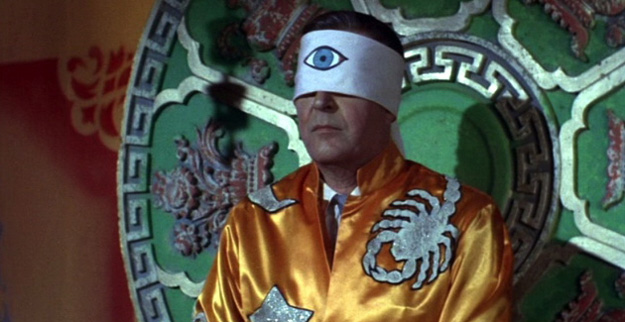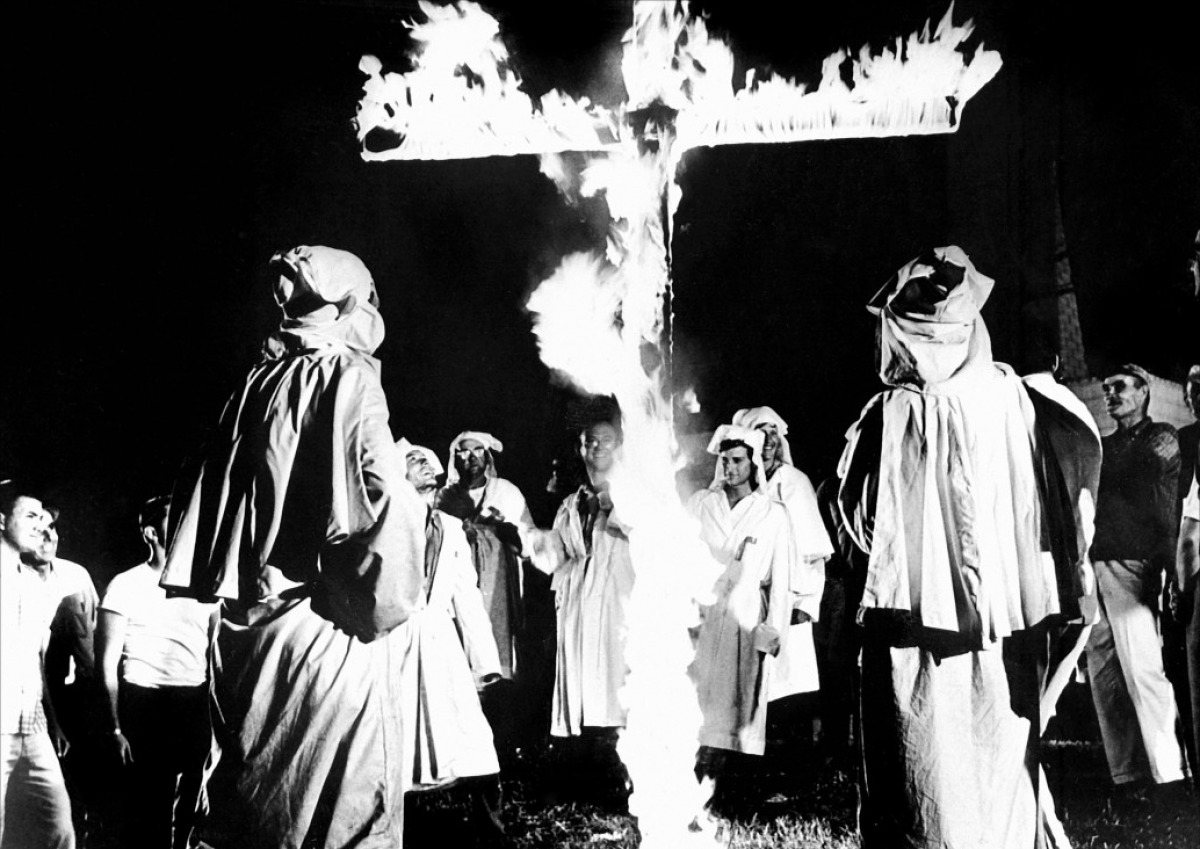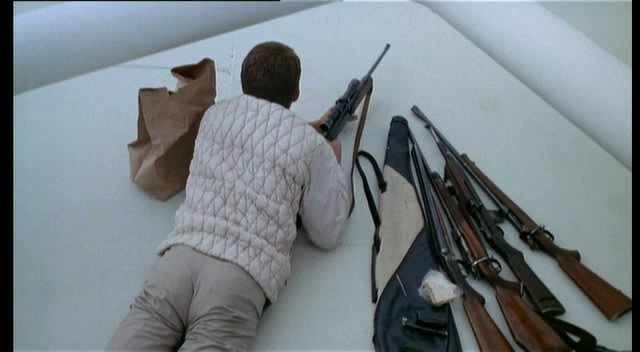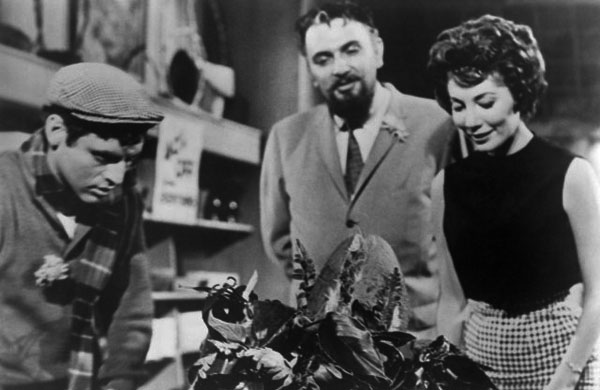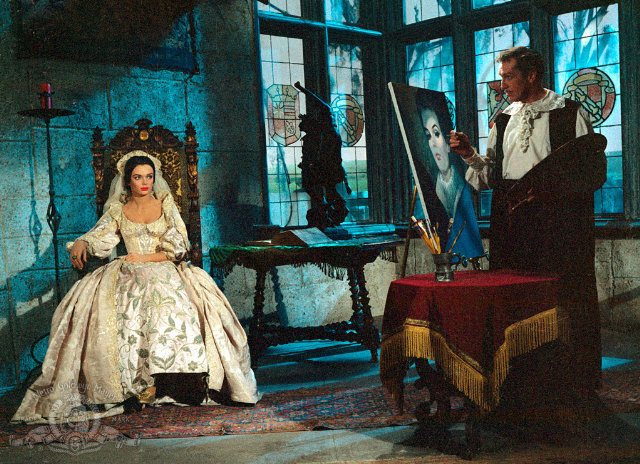7. X: The Man with the X-Ray Eyes (Director, 1963)
Genre: Horror, Sci-Fi
Film Plot: Dr. James Xavier (Oscar Winner Ray Milland) is a renowned scientist experimenting with human eyesight. He devises a drug, that when applied to the eyes, enables the user to see beyond the normal realm of sight (see through objects, ultraviolet rays, etc). When his funding is cut off, Xavier tests the drug on himself and he soon begins to see through the very fabric of reality which eventually drives him insane.
Production Notes: Because the film required lots of special effects, Corman got creative, for the scenes in which Xavier sees through buildings, he used time lapse footage of the building being built and played it backwards.
Why It’s Essential: It’s creepy and pulpy yet surprisingly poignant plus Don Rickles is in it.
6. House of Usher (Director, 1960)
Genre: Horror, Gothic
Film Plot: After a long journey, Philip Winthrop (Mark Damon) arrives at the Usher mansion to meet his fiancee, Madeline Usher (Myrna Fahey). Madeline’s brother Roderick (Vincent Price) opposes their marriage and tries to convince Philip that the Usher family is cursed. During an argument with her brother, Madeline suddenly dies, and Roderick buries her in the family crypt. Philip learns that Madeline suffered from catalepsy, a condition which can make its sufferers appear dead and he eventually finds Madeline alive. However, she has gone completely insane and is dead set on avenging herself upon Roderick.
Production Notes: Realizing that the market for low budget black and white films was in serious decline, Corman convinced AIP to take a gamble on making a larger budgeted film in color. The success of this film spurred Corman to produce several more films in the same vain. Before filming, Corman learned that there was an old barn in Orange County, CA that was about to be demolished, he was able to strike a deal that would allow him to burn the barn at night and film it.
Not only did he use the footage in the climax of the film but he used it in future films as well. The shots of Mark Damon riding through the stark landscape was filmed at the site of a fire in the Hollywood Hills. Corman had heard of the fire on the radio and went to the location the next day with his crew and Damon to film there.
Why It’s Essential: Corman directed 8 films inspired by Edgar Allen Poe stories (all but one of them starred Vincent Price). This is the first one.
5 . The Intruder (Director, 1962)
Genre: Drama, Thriller
Film Plot: Wearing a gleaming white suit and calling himself a social reformer, Adam Cramer (William Shatner), comes to a small Southern town on the eve of integration in its schools. But his aim is to incite the people against letting black children into the town’s white school and further racial tensions. Soon he has the white citizens of the town worked up and thinks he’s leading them; but he soon realizes that the people have become a mob and after a false accusation against a black student, Cramer finds that they are totally and permanently out of his control.
Production Notes: Corman initially tried to do this film with a major studio or production company but all of them passed so he decided to put his own money in. The film is also known under its US reissue titles as I Hate Your Guts! and Shame, and The Stranger in the UK release. Although it had a budget of only $80,000, until recently it was the only Corman film to ever lose money. The $6,000 paid by the recent documentary Charles Beaumont: The Twilight Zone’s Magic Man finally put it in the black.
Why It’s Essential: Three words. Creepy William Shatner. Also, its portrayal of racism and segregation is amazingly complex and mature for its time.
4. Targets (Producer, 1968)
Genre: Thriller
Film Plot: Consigned to low-budget drive-in fare, elderly horror-film star Byron Orlock (Boris Karloff) wants to retire from films, noting that his movies seem inconsequential in light of the real-life horrors occurring every day. While making a personal appearance at a drive-in theater, he confronts psychotic Vietnam veteran Bobby Thompson (Tim O’Kelly) who has turned into a mass-murdering sniper.
Production Notes: Boris Karloff owed Corman two days of work based on a previous contract. He told first time director Peter Bogdanovich that he could make any film he wanted as long as he used Karloff and stayed under budget. Corman also required Bogdanovich to use clips from The Terror, a film he directed with Karloff and Jack Nicholson.
Why It’s Essential: It’s considered one of the best debut features ever and is on the list of 1001 Movies You Must See Before You Die.
3. The Masque of the Red Death (Director, 1964)
Genre: Horror, Gothic
Film Plot: Satan-worshiper Prince Prospero (Vincent Price) invites several dozen of the local nobility to his castle for protection against an oncoming plague called “the Red Death”. Prospero orders his guests to attend a masked ball and, amidst a general atmosphere of debauchery and depravity, notices the entry of a mysterious hooded stranger dressed all in red. Believing the figure to be his master, Satan, Prospero is horrified at the revelation of his true identity.
Production Notes: Corman was able to get access to sets left from Becket which certainly helped the film to look more opulent than any of his other films. Actress Jane Asher asked if a musician friend of hers could visit the set and join them for lunch. The friend turned out to be Paul McCartney. Corman said that it was one of his personal favorites among his own films.
Why It’s Essential: It’s the most visually striking of all of Corman’s films. Renowned British filmmaker Nicolas Roeg was the DP on it so it makes sense.
2. The Little Shop of Horrors (Director, 1960)
Genre: Horror, Comedy
Film Plot: Seymour is a clumsy young man who works in a flower store. He manages to create a carnivorous plant that feeds on human flesh. Nobody knows about it, so Seymour and the plant become good “friends”. The plant needs food to grow up, so it convinces him to start killing people.
Production Notes: Corman had been given temporary access to sets at a studio and had only a few days before the sets were to be torn down. He sat with screenwriter Charles B. Griffith, who had wanted to write a horror comedy, at a restaurant and brainstormed ideas with a waitress there. The waitress turned out to be future Oscar nominee Sally Kellerman. They hashed out an idea but Corman later rejected it. While drunk, Griffith threw out, “How ‘bout a man-eating plant?” Corman said, “Okay” and the rest is history. Corman shot the movie in two days and one night.
Why It’s Essential: It’s the greatest movie ever made…in less than three days.
1. The Pit and the Pendulum (Director, 1961)
Genre: Horror, Gothic
Film Plot: Francis Barnard (John Kerr) goes to Spain, after hearing that his sister Elizabeth (Barbara Steele) has died. Her husband Nicholas Medina (Vincent Price), the son of the brutest torturer of the Spanish Inquisition, tells him she has died of a blood disease, but Francis finds this difficult to believe. After some investigating he finds out that it was extreme fear that was fatal to his sister and that she may have been buried alive. Strange things then start to happen in the Medina castle.
Production Notes: After the surprisingly huge success of House of Usher, instead of doing a sequel, AIP and Corman decided to do this because it was also based on Poe’s work. To create the flashbacks revealing Nicholas’ traumatic experiences, Corman decided to film the flashbacks in monochrome, since he had read that some psychiatrists believe most people dream in “black-and white”.
He also used wide-angle lenses, violent camera movement, and dutch angles to create a feeling of hysteria. To increase the pendulum’s sense of deadly menace, Corman took out every other frame during editing to make the blade appear to move twice as fast.
Why It’s Essential: Written by the legendary Richard Matheson, it’s considered one of the most heavily influential horror films of all time and was especially so amongst the giallo filmmakers. Stephen King has acknowledged that the discovery of Elizabeth’s hideously decayed corpse as one of the most important sequences in all of horror.
Author Bio: Alex Moore is a filmmaker living in Los Angeles with his B.A. in Drama and Comparative Literature from the University of Washington and a degree in film production from Vancouver Film School in Canada. He will definitely promote something when he has something to promote.
